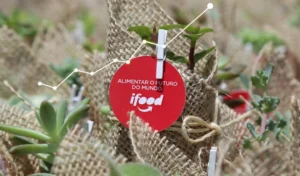The term sustainability is fashionable, or on people's lips. It's great that you are. After all, beyond the meanings that you will see below, sustainability is thinking about the future; ours and that of the next generations.
Here, you will learn a little more about sustainability and what institutions can do to mitigate the effects of a development that has, until now, proven to be unsustainable.
What is sustainability?
The United Nations Brundtland Commission in 1987 defined sustainability as the way we meet the needs of the present without compromising the ability of future generations to meet their needs. It’s about thinking about the resources that the children and grandchildren of the current generation will have at their disposal.
Talking about sustainability means balancing the balance between the population's supply and awareness of the need to put the planet's natural resources at risk, which may be finite.
More directly, we can say that, yes, it is possible to exploit natural resources, but with care. The development of society needs to be sustainable, otherwise, in the future, there will be nothing to explore.
An example that may seem silly at first glance, however, has everything to do with this topic is how bees act in nature. At the same time as they remove raw materials, they give them back through pollination.
Contrary to what one might imagine, therefore, sustainability is not about an untouchable stance towards natural resources. The aim of this concept is to visualize the importance of conscious use, which carries with it the importance of To preserve the environment for the future.
What are the types of sustainability
Unlike an animal that lives in an ecosystem far from big cities, human beings still have a very limited notion of sustainability.
Despite the popularization of the term, as previously mentioned, the extraction of resources and the unbridled development of society have left the sustainable balance unbalanced.
It is not new that concern about the future of the planet due to scarcity of natural resources is on the agenda. It is this concern that originates the concept, as well as the notions of study and their divisions.
In fact, the term goes back centuries of history, but it is since the United Nations Conferences on the environment that it has come back into vogue. Stockholm, Rio 92, Rio +10 and Rio +20 they sought to create goals so that participating countries could have growth that was not harmful to the environment.
It is through global initiatives like these that researchers begin to intensify studies on the topic and can generate classifications for types of sustainability:
- Environmental: concerns the natural capital of an enterprise. It is highly unlikely that an economic activity does not generate environmental impact, being the task of a company plan how to minimize these impacts or create new actions to replace the resources used.
- Social: it is about the use of society's human capital and its valorization. A company must think about the well-being of its employees, follow the laws according to the employment relationship format and offer a fair salary.
- Economic: relates to the production, distribution and consumption of goods, considering actions that minimize the exploitation of the environment.
Sustainability tripod
Talking about the types of sustainability touches everything that lives and happens on the planet. Therefore, there is no way to think about the spheres of society inseparably from the concept.
For a world where we can inhabit and raise future generations, these three factors need to be in harmony. That is why, in 1994, the term “sustainability tripod” was created by John Elkington, a British businessman and authority on subjects such as corporate responsibility and sustainable development.
What affects nature affects the economy and, therefore, the social. And just like the classification in the topic above, the sustainability tripod is based on these three principles.
Sustainability by companies
A classification that could also be included in “types of sustainability”, but that we will focus on here is corporate sustainability.
This is the way in which companies base their actions on social responsibility and manage environmental issues, reconciling them with the search for profitability.
The sustainability tripod is closely linked to the concept ESG, and awakens companies to take a special look at their actions towards the environment.
This is a new field in the business world, where investors and shareholders They look for companies that are concerned with environmental and social criteria in their practices and the impacts they generate.
Read too: An assessment of ESG at iFood
iFood and sustainability
Knowing that sustainability is a collective effort, each company needs to be aware of its role in preserving resources for the future.
Companies like iFood aim to revolutionize and instigate thinking about a prosperous future. In order to turn talk into action, the company launched some initiatives that seek to affirm its environmental commitments.
O iFood Regenerates seeks to deliver more to the environment than is consumed from it, following the balance of sustainability. A foodtech launched the program with two fronts of action: the first aiming to eliminate CO2 emissions by 2025 and the other to eliminate plastic pollution from deliveries within the same boundary year.
Furthermore, among other initiatives, iFood, in August 2021, became part of the group of companies that signed the UN Global Compact (United Nations). Like this, is now part of the largest corporate sustainability initiative in the world, alongside more than 12 thousand companies in 160 countries.
If you want to know more about other sustainable iFood actions, check out iFood Pedal, which uses regular and electric bike sharing as a non-polluting alternative to delivery.


